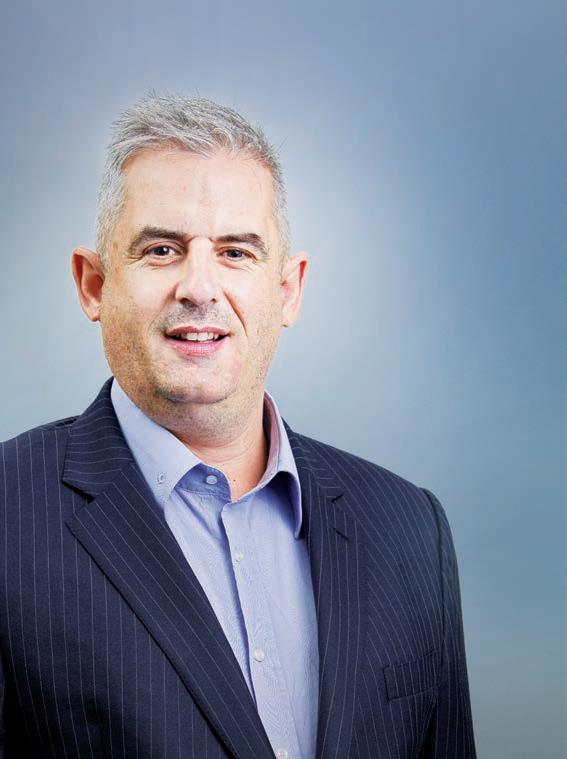
5 minute read
Opinion
AN ARCHITECT SPEAKS
Paul Rees offers tips on how best to approach architects
Advertisement
The past year has seen unprecedented uncertainty, but as vaccinations are rolled out, there is hope for a precovid lifestyle returning. As with most industries, the architectural ironmongery sector will be looking to revitalise and how to secure more work will undoubtably be a large part of this.
Approaching an architect with the aim of starting a working relationship which sees them specify your products should not be a complicated experience.
Firstly, it pays to approach the appropriate architect for your goals. Not every architect will be suitable or align with your aspirations. Nothing beats doing some research before lifting the phone or sending an e-mail. Most architects have a website, social media account or can be found on LinkedIn. Check that their projects and type of work associate with your company and products, especially in quality and budget.
Next, prioritise the architects in the order you should contact them; from the most compatible to the least and do not be afraid to apportion your time accordingly. You may need to spend a little more with some than others. However, value their time as well as yours equally. The construction sector is a competitive market and nowhere more so than in architecture. Fees which are continuously being driven down and everchanging legislation can occasionally leave architects with little time for reviewing new products, or suppliers on some projects and you won’t gain anything pursuing a connection that has clearly expressed no interest. If you consider it necessary, add them to the bottom of the list for a later date.
How can you help?
Like most people, architects may stick with what, or who, they know, but it does not automatically mean they’re not open to alternatives. We’ve all heard the saying ‘people buy from people’; so know the person you’re talking to and what they need. This comes partly from doing research, but partly from listening to them. It’s not about you, your company or your products. It’s about the architect’s problem, or at least, their client’s problem they’re solving and then how can you assist them. What knowledge can you bring to the table, not just products.
Architects look at the whole picture, including the fine details. They will have an opinion on what is required or appropriate and this should be considered just as equally as yours when proposing solutions or raising other issues. Don’t try to sell something that doesn’t solve the technical problem or match the aesthetic intention, just because it’s your best or most expensive product.
Be honest
This links to the final issue; always be honest. Like all relationships, no-one likes being mis-led. Talk openly about any limitations your company or products have. This will save both of you time in the long run and show great integrity on your part, which is likely to be remembered. Similarly, informing architects of supply or technical issues will always help them on projects which are likely to have programme constraints and avoid unwanted delays. This will maintain the respect you have worked hard to develop and is more likely to result in repeat business. n
MAN OF THE WORLD
Based in the UK but working on International projects, Timothy Perry’s career has taken him across the globe
Timothy Perry is a RegAI and a qualified Architectural Hardware Consultant (the DHI qualification in the US) at FSB – Franz Schneider Brakel GmbH +. He is a member of the GAI Executive Committee and Education Committee and an affiliated member of RIBA.
Timothy’s career to date has been an adventure. Based in the UK, he works on project specifications for the Middle and Far East. He spent 13 years at Lloyd Worrall in the UK and later joined FSB in Germany for four years. From there he expanded his horizons across the globe, including starting the Häfele International Project office in Germany working with architects and interior designers in Dubai, Singapore and Hong Kong for projects throughout the Middle East and Asia. He spent a year in Malaysia and over four in Singapore.
“My GAI education has sent me around the world and I am thankful for that,” says Timothy. He rejoined FSB in 2019.
As you specify into projects abroad you typically work with ANSI standard. You say many factors will determine the best standards to use for a project and the types of quality of materials. Can you expand?
I write ‘door by door’ specifications in ANSI or British Standard depending on the origin of the architect or the location of the project, i.e. many projects in Saudi Arabia are ANSI and some projects demand the higher testing cycles of ANSI for products.

What are the most challenging aspects of your job? And which are the most rewarding?
On a day-to-day basis, challenges have decreased over the years as I gained more experience. Gathering all required information for some projects can be at times be a challenge, but then seeing a picture the finished project is most rewarding and I can say I did that!
Having worked globally what observations do you make about the way architects in different countries approach projects?
I have noticed that the architects in some countries have more power to hold a spec on the project than others. In other countries, the contractor has power to change the spec and supply to whatever he/she likes.
For those in the UK, can you explain more about AHC. How does it differ for instance from RegAI?
The AHC is similar to the Reg. AI. The AHC credential allows the holder to write specs and consult on ANSI standard projects. ANSI stands for American National Standard Institute. ANSI is supplied to projects in the USA, the Middle East, Macau, Guam, and the Philippines.
What changes would you like to see in the AI industry?
More money spent on quality door hardware, as it’s the part of the building gets touched the most. More power to the architect to hold on to the spec.
How do you spend your spare time?
Enjoying time with my wife and our young daughter, cooking, eating out, walking, gardening and supporting England at cricket. I am looking forward to getting to Lords cricket ground sometime late summer if government restrictions allow. n









